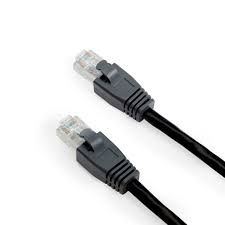Networking your home computer setup is simpler than it may seem. The modem is linked to the Internet connection when it enters the home. If each computer has a wireless card and a wireless modem, you may access the Internet through that. Attaching each computer with a cat5e network cable streamlines the Internet to each computer and creates a more secure network that is not impacted by modem and computer interference. As many PCs as your modem can support can be connected.
Telephones, TVs, and computers use cables. Furthermore, it is hard to envisage our existence without these modern gadgets. Since many modern devices require networking connections to function, we can undoubtedly conclude that they are an essential component of people’s life.
TV supplier talks about cable connection while computer supplier pushes ethernet cable. People sometimes struggle to decide which cable to purchase since many varieties exist. There is another question that is frequently asked as well. Are Ethernet Cables the Same as Network Cables? Let’s explain this frequent misunderstanding.
The word “network cable” is a generic one that covers a wide range of uses. Additionally, a local area network access technology is Ethernet. Therefore, you may refer to any cable that allows connectivity with a system or device inside a LAN as an “ethernet cable” or “network cable.” Obviously, network and ethernet wires are the same. Ethernet and LAN cables are included in network cables.
Today, we’ll strive to comprehend Ethernet technology and LAN cables thoroughly. We really hope that will assist you in clearing up all of your confusion.
Internet Protocol
Whenever you discuss a wired electronic item at home or work, the phrase “ethernet” will be used. Therefore, any systems that require a network cable to connect have an ethernet connection. This category excludes any device that operates without the need for a wire. Xerox developed Ethernet in the 1970s, and in 1983, it was turned over to IEEE.
Following this, Ethernet became a universally adopted open standard. According to the IEEE, Ethernet is a guideline rather than a design element for some equipment. It only sets out how to set up the apparatus in order to establish a connection.
Network Cable
The name Ethernet is where the phrase “ethernet cable” first appeared. Additionally, the most typical kind of ethernet network cable is UTP (Unshielded Twisted Pair). There are many grades of this cable type, with CAT5 being the most used kind. But calling UTP an Ethernet wire is a misconception. Since some ethernet network cables are STP and some are unshielded (shielded twisted pair).
Aside from this, ethernet cables have historically increased from 10 to 100 megabytes to 1 to 10 gigabytes. Even 40 G has been attained in specific data centers, sometimes even 100 G.
A LAN cable
Lan cable refers to any particular sort of data cable that supports computer networking. It is explicitly intended for use over short distances. It contains the majority of coax types and equipment with BNC or Ethernet cable terminations. These Lans link or access any data through wired connections.
Two traits assist in distinguishing Lans from one another.
Network topology describes where computers are located and how a local area network connects.
The device’s physical connection to the network is referred to as the media characteristic.
In addition, there are two different kinds of LAN cables based on the protocols:
Customer/Server Lans
Two-tier Lans are another name for these Lans. These are composed of robust computer networks that assist in controlling network traffic, printers, and disc drives. These LANs support workstations, personal computers, and the operation of programs.
Comparative Lans:
Despite being easy to set up, they do not operate well when under a lot of pressure. Each computer or node contributes equally to the operation of these LANs. Data transfer via lan cables is substantially quicker than using phone line connections. The number of computers they can support and the distances over which they can carry data are also constrained. This results in the developing of what is known as a wide-area network (WAN).
Hope this knowledge helped clear up any misunderstandings you may have had about Lan, EthernetEthernet, and network wires. Furthermore, we presume that two ideas—Lan (local area network) and Wan—are now understood (Wide Area Network). Whether Ethernet or Lan cables, ethernet network cablehelp in data transport and communication to devices. What do you think about the same? Let us know what you have.

